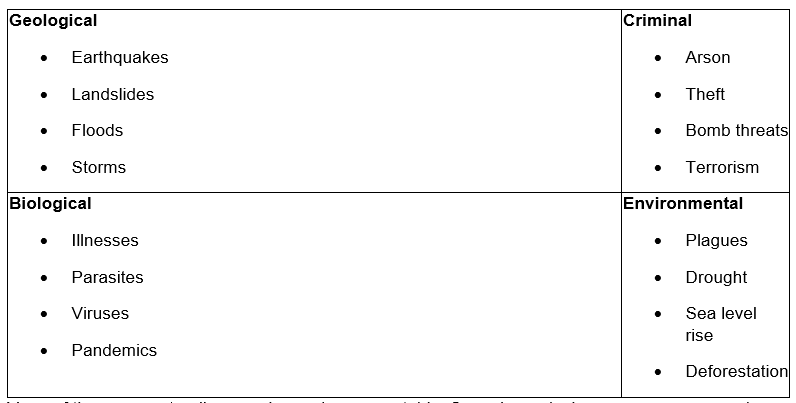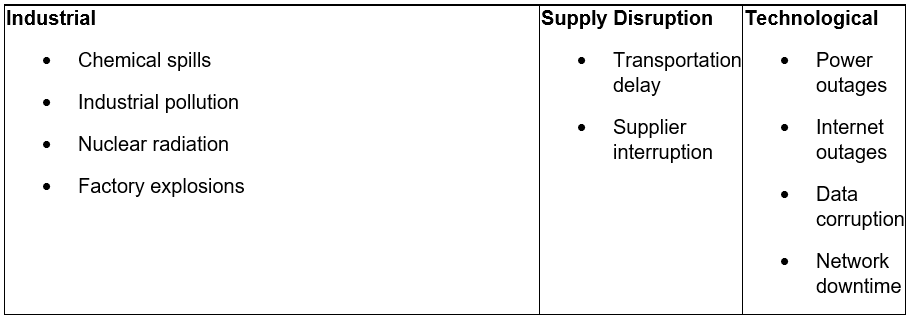Anthony Escamilla of Chicago works closely with organizations that focus on training for mental health wellness for first responders, as well as safety and security threat assessments for businesses. In the following article, Anthony Escamilla discusses the importance of strategic risk management and the significance of comprehensive threat assessments. These assessments serve as a linchpin in fortifying business resilience, allowing organizations to proactively identify, analyze, and mitigate potential hazards.
Japan’s recent decision to release water from Fukushima caused concerns for their neighboring countries. As many know, these waters are radioactive since they come from the Fukushima Daiichi Nuclear Power Plant.
But could this problem entirely be avoided if only the nuclear disaster was prevented?
Anthony Escamilla of Chicago says that furthermore, if Japan, a nation known for innovative technology and responsible work ethic, experienced a catastrophic disaster, how can smaller industries protect themselves from similar dangers? Enter – threat assessments.
Below, Anthony Escamilla highlights the importance of threat assessments in business to ensure a smooth-sailing operation.
Anthony Escamilla Explains What Constitutes a Threat
All companies face risks when operating. These risks can prevent them from running their business – temporarily or permanently. However, some industries are more at risk of experiencing threats.
Anthony Escamilla of Chicago says that for instance, Japan lies in the Ring of Fire – where several tectonic activities occur. Therefore, business owners in the country often consider the likelihood of external dangers emerging – such as volcanic eruptions, earthquakes, and tsunamis.
However, there are also other types of external hazards. They include:
External Threats

Many of these are naturally occurring and unpreventable. Some hazards, however, are man-made – in some cases, committed by the industry or workforce instead.
Anthony Escamilla of Chicago explains that in the case of the Fukushima Daiichi Power Plant, where radioactive elements are processed, there’s an increased threat of chemical leakage and explosion. Ultimately, the failure to recognize an external threat (tsunami) on a massive scale led to another disaster – a nuclear meltdown.
But not all businesses face catastrophic threats similar to that. Some operations can get interrupted due to WiFi outages or delayed product shipments.
Other forms of internal problems include:
Internal Threats

To minimize risks that can affect businesses, they must conduct a threat assessment program.
Threat Assessments
Anthony Escamilla of Chicago explains that threat assessment consists of four steps:
 • Identify
• Identify
The first step is to identify possible threats that a business can experience. Will the establishment operate in an earthquake-prone area? If so, a volcanic eruption is a threat.
Are terrorist groups likely to disrupt the business? Terrorism poses a threat as well.
Will the business work with chemicals? Chemical spills or factory explosions are also serious potential risks.
After identifying the potential dangers, a business owner must consider their potential impact on company operations.
• Assess
Anthony Escamilla, Police Officer notes that some threats are relatively insignificant, such as a few minutes of power outage. Others, however, can lead to a business closing down. Therefore, it’s vital to inquire about the likelihood of these dangers happening – and how often these will occur.
Is the nearby volcano active? A business owner can consult a geologist.
Do insects in the area carry diseases? The business owner can discuss this with entomologists.
Are storms and flooding common? A meteorologist or real estate agent can answer if the building is in a flood prone area.
Furthermore, companies must also evaluate the likelihood and impact of potential threats to the business.
Are the machines prone to malfunctioning? If so, this can pose a safety hazard to employees.
How often will the company repair damages? It can contribute to financial loss.
Will patrons still support the business after a disaster? The reputation of a business can suffer.
Once the risks’ probability and effects are answered, the next step is to develop solutions.
 • Control
• Control
Anthony Escamilla, Police Officer says that depending on the danger to the business, companies develop and implement solutions – to mitigate or prevent casualties, financial loss, and damage to the reputation.
Here are some examples of threat controls:
– Prevention
When it comes to natural disasters like floods, some businesses fortify their establishments to prevent electrical or structural damage. Others use earthquake-resistant building materials.
Most businesses also train employees to prevent errors, machine misuse, data corruption, and explosions.
Anthony Escamilla, Police Officer also notes that it’s crucial for the company owner and employees to know what to do in case of a threat.
– Action
Companies often implement policies to prevent accidents and disasters. Some conduct fire drills and others create evacuation plans.
Employees working in harsh climates are sometimes provided notice regarding the weather. And those required to travel a lot are given travel policies.
After implementing these threat controls and policies, it’s time to evaluate the overall threat solutions.
• Evaluate
The final step is to evaluate the threat solutions.
Did building improvements decrease property damage?
Did employee training lessen workplace accidents?
Did switching suppliers reduce delivery delays?
When both the workforce and consumers respond positively, it suggests that the threats were properly evaluated. Nonetheless, this shouldn’t deter a company from enhancing its threat assessments, as new potential dangers can occur.
Additionally, new technology can emerge – and be used to prevent and control risks.
Summary
Anthony Escamilla, Police Officer says that in an ever-changing landscape, the ability to anticipate and address potential threats is paramount to the success and longevity of any business. Through meticulous threat assessments, organizations can not only safeguard their assets but also empower themselves to navigate challenges with strategic foresight. By embracing this proactive approach, businesses stand poised to not only weather storms but to emerge stronger, more resilient, and better positioned for a future of continued growth and success.








